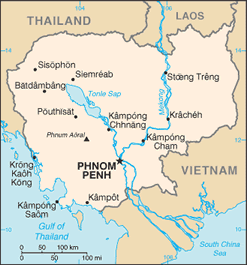
Cambodian children who lose one or more parents to the epidemic will face severe poverty and malnutrition and will become vulnerable to exploitation as child prostitutes and labourers. Reports are saying that the most vulnerable group of Aids orphans is those aged seven to twelve. This age group is considered to no longer attract the protection given, by the government, to babies and infants, to be old enough to work, but to lack the life skills and the physical strength to protect them.
For young girls in this situation there is a great danger of being sold to brothels if orphanages do not take them in before their mothers with HIV/Aids become too ill to protect them. The Government has little money to support orphanages and many children prefer to live on the streets rather than in Government orphanages as the conditions there are very grim.
The Cambodia Demographic and Health Survey 2005 estimates that ~9% of all children (~570 000) in Cambodia are orphans and that 1% of all children (approximately 66 000 children) have lost both parents. An orphan is defined as a child below the age of 18 years who has lost one or both parents.
In addition to orphans in households almost 9000 children are living in orphanages (May 2006 est.). Of the children living in Cambodia’s orphanages, 40% are orphans, 11% have been abandoned and a further 43% have been relinquished to institutional care due to poverty.
However, there are no current estimates of the number of children orphaned as result of HIV/Aids, the number of AIDS affected children or the number of children made vulnerable by the epidemic.
Top
Sources:
https://www.cia.gov/library/publications/the-world-factbook/geos/cb.html
http://www.khana.org
http://www.unaids.org/en/CountryResponses/Countries/Cambodia.asp
http://www.wikipedia.com/cambodia
- Health, N. I. o. P., N. I. o. Statistics, et al. (2006). Cambodia Demographic and Health Survey 2005. N. I. o. P. Health, N. I. o. Statistics and O. Macro.
- Ministry of Social Affairs, Veterans and Youth Rehabilitation’s (2006) Policy on Alternative Care for Children. Phnom Penh , Cambodia

